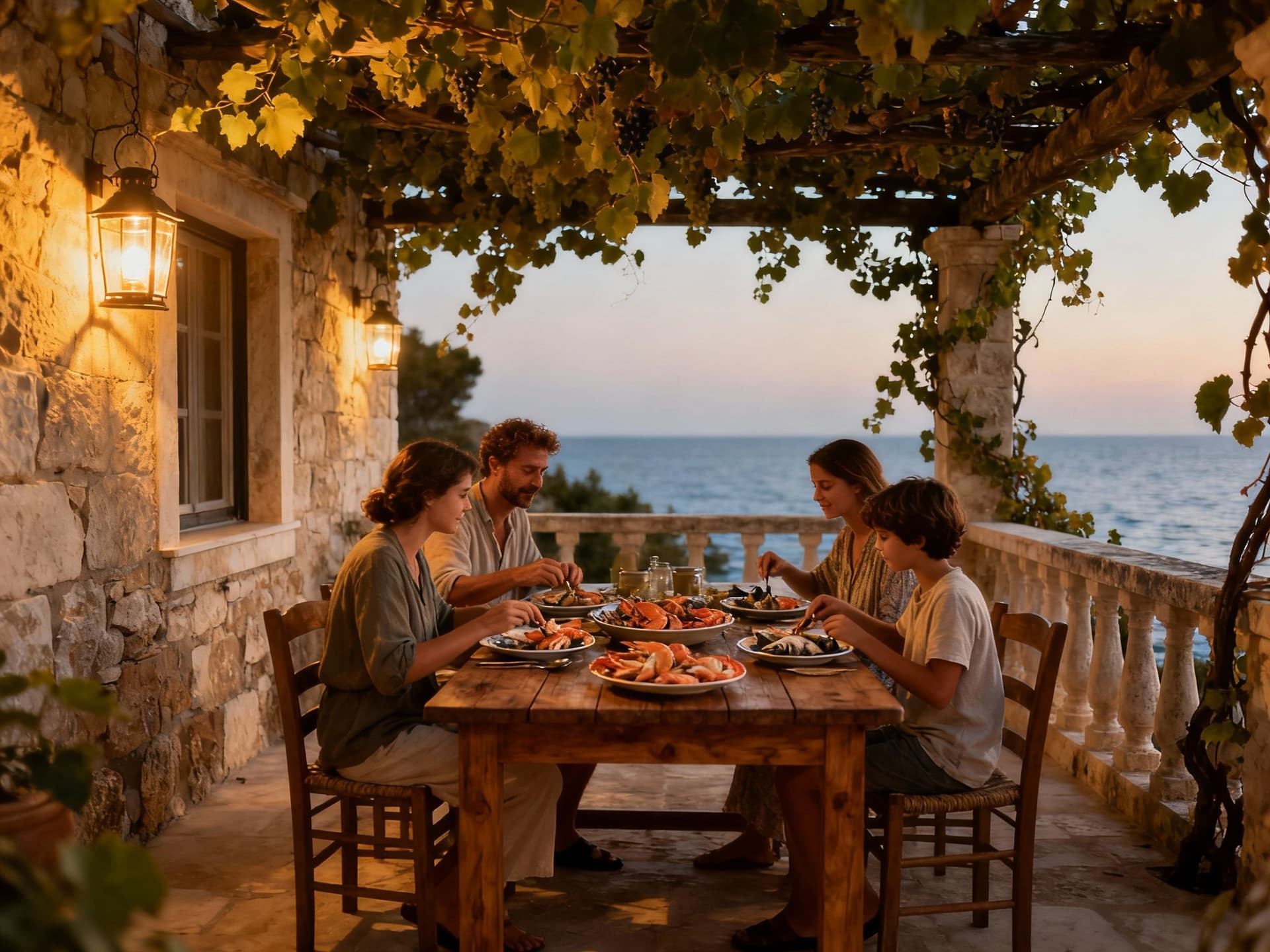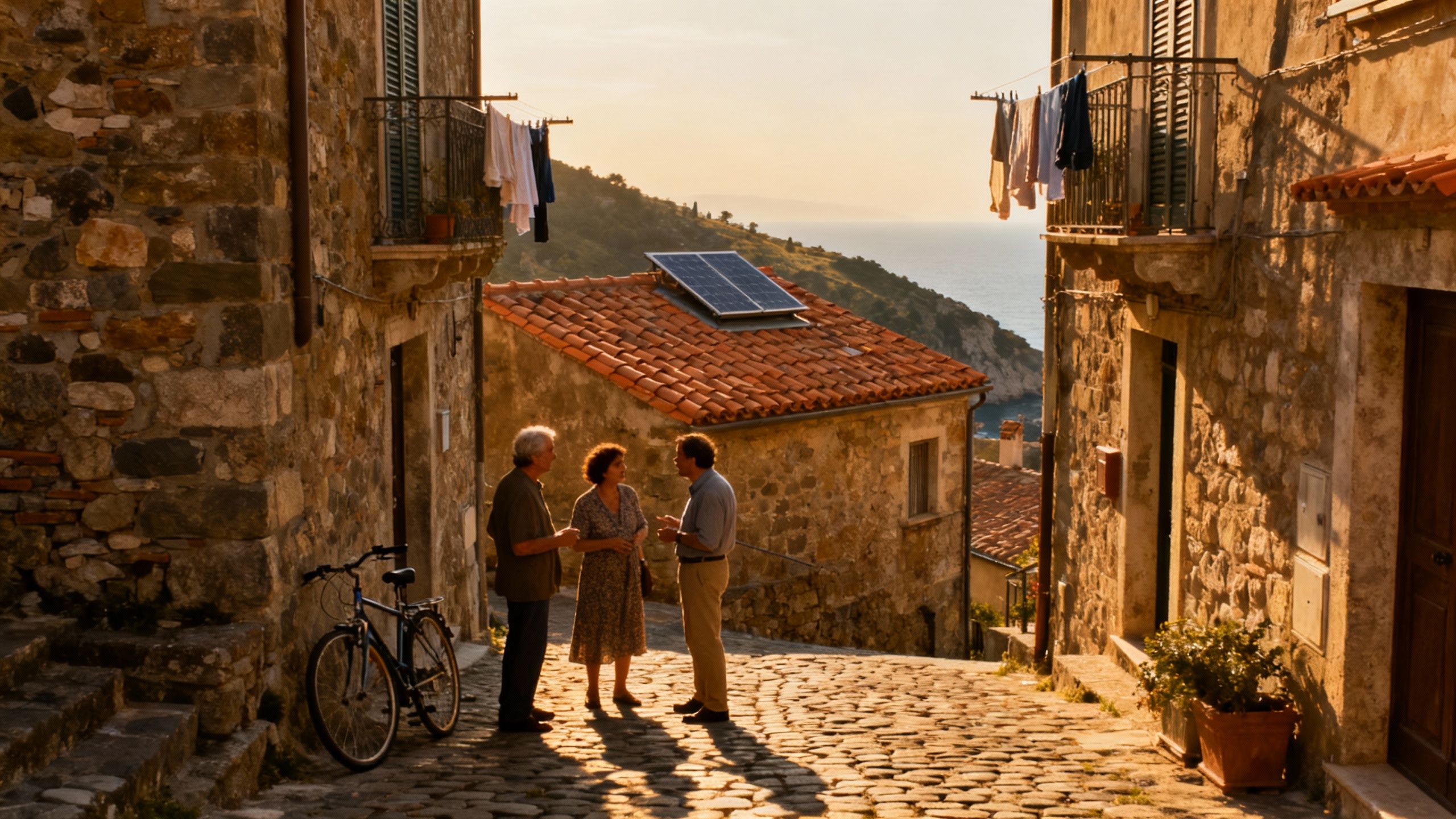Croatia: Life-First Buying with Green Finance
Fall for Croatia’s seasonal life, then match it with green finance: ministry approvals, HBOR-backed loans and energy upgrades make sustainable buying realistic.
Imagine waking to the smell of fresh coffee and pine resin, then walking to a market where figs glint next to heirloom tomatoes. In Croatia that morning ritual can be on a Dalmatian quay, a quiet Istrian lane or a stone courtyard in Zagreb. For many internationals, the romance of coastal light and old stone is the spark; the practical realities — mortgages, ministry approvals, and green financing — are the scaffolding that makes the dream habitable.
Living the Croatia lifestyle

Croatia is a study in contrasts: bustling riva promenades in Split, hushed olive groves around Stari Grad on Hvar, and the leafy café culture of Zagreb’s Tkalčićeva. Life here moves with the seasons — sea-swims and late dinners in summer, mushroom foraging and hearty broths in autumn — and homes are often designed to match that rhythm. Expect stone terraces that capture morning light, community markets where sellers know your name, and neighbours who take pride in local stewardship of land.
Neighborhood spotlight: Split’s Veli Varoš and Diocletian’s shadow
Walk the cracked steps of Veli Varoš at dawn and you’ll find fishermen hauling nets, grandparents playing cards, and small konobas serving still-warm pastries. Properties here are intimate — small courtyards, thick stone walls and terraces that face the sea or the old town. For buyers who want proximity to lively festivals and cafés, these older neighborhoods feel alive in a way new-build complexes rarely do.
Food, markets and slow weekends
Picture Saturday mornings in Zagreb’s Dolac market: honey-glossed peaches, wild greens, and a baker who knows your order. In coastal towns, weekend rituals revolve around catching fish, shelling beans and languid long lunches. These routines shape which property features matter: a sunny kitchen for preserving, a shaded pergola for afternoon naps, or a small plot where a mature olive tree softens a terrace.
- Local lifestyle highlights:
- Morning espresso at Split’s Riva, evening stargazing off Vis’s Stiniva Cove, and markets on Dolac (Zagreb) or Pazar (Zadar).
- Seasonal foraging in Istria and rural Konavle, with local festivals anchoring cultural life.
- Neighbourhood cafés on Tkalčićeva and the quiet lanes of Rovinj where stone houses keep cool in summer.
Making the move: practical, green-minded considerations

Romance alone won’t close a sale. International buyers must reconcile lifestyle desires with legal steps, financing options and a growing ecosystem of green incentives. Recent developments mean greener projects and renovation loans are becoming more accessible through national institutions and EU-backed programmes, so sustainability can be both a lifestyle choice and a financial strategy.
Who can buy and the Ministry of Justice step
EU citizens face a straightforward path to property ownership; non‑EU nationals generally need consent from the Ministry of Justice under the reciprocity principle. The ministry’s approval is usually procedural but expect paperwork, an OIB number and a local representative if you’re remote. Lawyers and agents who’ve completed these requests before will save weeks of friction and help avoid surprises at contract stage.
Green finance: what’s available now
Croatian development bank HBOR and commercial banks are expanding green lending after recent EIB tranches aimed at energy efficiency, renewables and sustainable construction. That means buyers who plan renovations — heat pumps, solar panels, insulation upgrades or water‑wise landscaping — may access preferential credit lines or subsidies through intermediaries. Ask local banks about energy‑efficient mortgage discounts and HBOR channels that pass EU/EIB capital to household-level projects.
- Steps to combine lifestyle and green finance:
- Pre-qualify with a Croatian bank or international lender and ask specifically about green-rate products or renovation top-ups.
- Commission an energy audit before offer to understand quick-win upgrades and eligibility for subsidies.
- Structure the purchase to include a renovation escrow or staged releases for energy works, protecting both buyer and lender.
Insider knowledge: what expats wish they’d known
Prices have been on the rise nationwide, with official indicators showing double‑digit year‑on‑year increases in recent periods. At the same time, policy efforts to redirect tax burdens toward property and to discourage short‑term tourist conversions affect holding costs and long‑term rental prospects. Knowing this, many expats shop for houses slightly inland or in less-touristed islands, balancing price and authentic year‑round life.
Cultural and neighbourhood realities
Croatian social life values familiarity: you’re more likely to be welcomed after attending a few local events than by showing up with a glossy brochure. Language learning pays off — even a few words opens doors and trust. For buyers, that means prioritising neighborhoods where community life matches your tempo: quieter Konavle villages if you want slow mornings, or Split’s Bačvice if you want lively summer nights.
Long-term stewardship and hidden costs
Stone houses are beautiful but can need specialist repairs; coastal exposure increases maintenance on metalwork and wood. Factor in energy upgrades if a property lacks modern insulation — these are often the biggest lever to lower running costs and qualify for green loans. Work with local craftsmen and an agent who understands sustainable retrofits; it preserves character and reduces future surprises.
- Red flags to watch for:
- Unclear land registry entries or recent unpermitted extensions; they complicate ministry approvals.
- Over-optimistic rental income estimates in high-tourist areas when taxes and new rules can reduce yields.
- Ignoring seasonal water availability and irrigation for gardens in drier coastal zones.
Conclusion: live the life, then shape the finance
If Croatia’s rhythm calls to you, begin by tasting local life and then bring specialists along: an agent who knows neighbourhood tempo, a lawyer experienced with ministry consent, and a lender fluent in green upgrades. Start with a lifestyle list — what mornings and weekends look like — then map financing to those needs. That combination keeps the dream honest, the home resilient, and the stewardship local.
Danish relocation specialist who moved from Copenhagen to the Algarve; supports families with seamless transitions, local partnerships, and mindful purchases.


